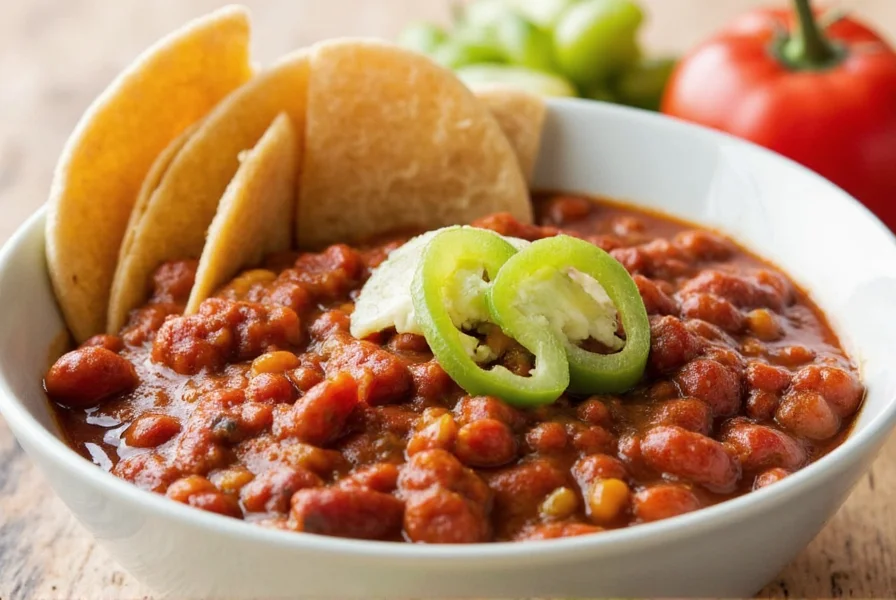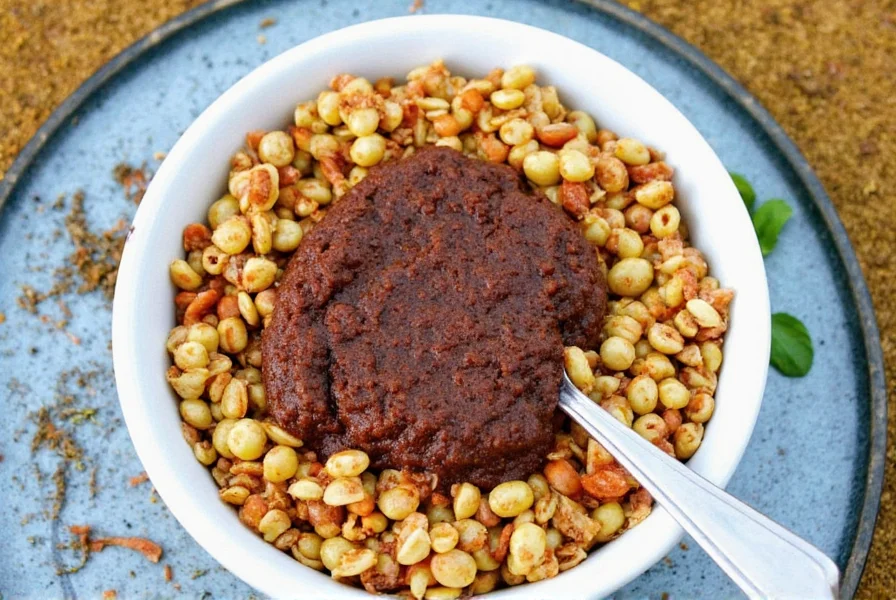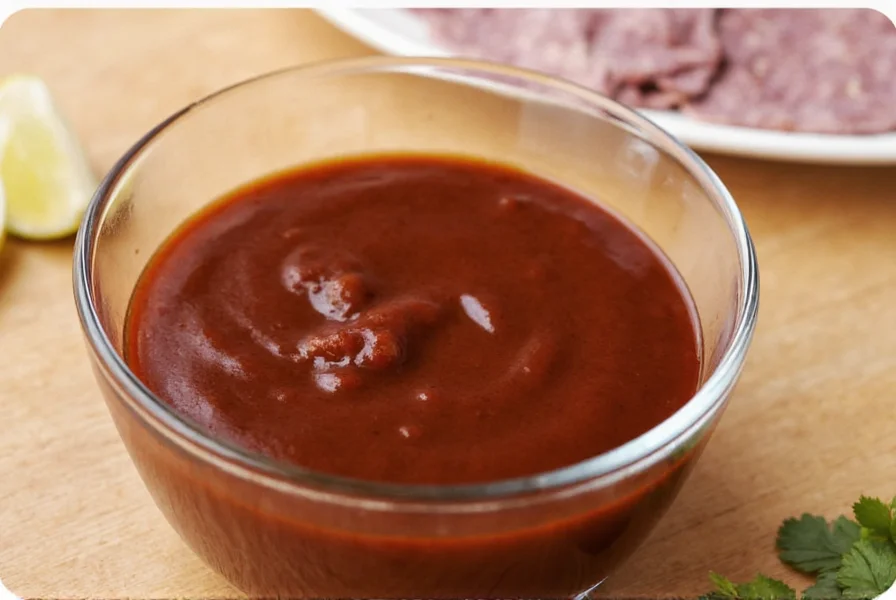What is Mole Sauce? A Rich, Complex Mexican Culinary Treasure
Mole sauce is a traditional Mexican sauce renowned for its intricate blend of sweet, smoky, nutty, spicy, and savory flavors. Contrary to popular belief, it's not just "chocolate sauce"—while some varieties include chocolate, many regional versions rely on chiles, nuts, seeds, and spices for their signature depth. Originating from indigenous Aztec cooking and later influenced by Spanish ingredients, mole has evolved into a cultural symbol of celebration, often featured in holidays like Día de los Muertos.

Table of Contents
- A Brief History of Mole
- The Building Blocks of a Perfect Mole Sauce
- Types of Mole Sauces
- How to Make Mole at Home
- Buying Guide: Best Mole Sauces on the Market
- Creative Ways to Use Mole Sauce in Everyday Cooking
- Frequently Asked Questions About Mole Sauce
- Conclusion: Embracing the Magic of Mole
A Brief History of Mole
The story of mole begins in Mexico, where indigenous culinary traditions merged with Spanish influences during colonial times. Originally rooted in Aztec cooking, early versions of mole were made from ground seeds, chiles, and game meats. When the Spaniards arrived, they introduced new ingredients like almonds, bread, spices, and chocolate. Mole has since evolved into a symbol of cultural pride and celebration. In fact, Día de los Muertos (Day of the Dead) wouldn't be complete without a pot of homemade mole simmering on the stove.
The Building Blocks of a Perfect Mole Sauce
What makes mole so special isn't just its flavor—it's the complexity of ingredients. A classic mole poblano recipe might contain up to 30 components! Here's a breakdown of the core elements:
- Chiles: Ancho, pasilla, mulato—each brings a different layer of heat and earthiness.
- Nuts/Seeds: Almonds, sesame seeds, peanuts, pumpkin seeds add depth and texture.
- Spices: Cinnamon, clove, pepper, anise, and cumin contribute warmth and aroma.
- Bread or Tortillas: Toasted tortillas or day-old bread help thicken the sauce and add body.
- Chocolate: Typically Mexican chocolate (like Abuelita), which contains cinnamon and sugar.
- Fruits: Sometimes raisins, plantains, or dried fruits are added for sweetness.
- Liquid Base: Broth, water, or even milk gives mole its silky texture.

Types of Mole Sauces
Contrary to popular belief, "mole" isn't just one sauce. There are dozens of regional variations across Mexico. Here's a quick visual comparison:
| Type | Color | Flavor Profile | Main Ingredients | Region |
|---|---|---|---|---|
| Mole Poblano | Dark brown/red | Rich, smoky, slightly sweet | Ancho, mulato, sesame, almonds, chocolate | Puebla |
| Mole Negro | Jet black | Deeply roasted, coffee-like | Dried chiles, plantains, onions, garlic | Oaxaca |
| Mole Verde | Bright green | Fresh, herbal, tangy | Toasted pumpkin seeds, tomatillos, herbs | Oaxaca/Oriental Mexico |
| Mole Amarillo | Golden yellow | Spicy, fruity, floral | Guajillo chiles, nuts, spices | Oaxaca |
| Mole Coloradito | Reddish-brown | Smoky, slightly bitter | Tomatoes, chili powder, spices | Oaxaca |
How to Make Mole at Home
You don't need a PhD in flavor science to make mole at home—but precision and patience are key! Here's a detailed, authentic method using store-bought ingredients:
- Toast Dry Ingredients: Heat a dry skillet over medium-low. Toast chiles (ancho, mulato) for 1-2 minutes until fragrant but not burnt. Add nuts, seeds, and spices (cinnamon, clove, cumin), toasting for another 1-2 minutes. Pro tip: Wear gloves when handling chiles to avoid skin irritation.
- Soak and Simmer: Place toasted chiles in a bowl with hot broth or water. Cover and soak for 20 minutes. Drain, reserving 1 cup of soaking liquid.
- Blend Thoroughly: In a high-speed blender, combine soaked chiles, toasted ingredients, toasted tortillas (or bread), and reserved liquid. Blend until completely smooth (2-3 minutes). For extra smoothness, strain through a fine-mesh sieve.
- Slow Simmer: Pour blended mixture into a saucepan. Cook over low heat, stirring constantly for 25-30 minutes until thickened. Add more broth if too thick.
- Add Chocolate: Stir in 1 oz of Mexican chocolate (like Abuelita) and a pinch of sugar. Cook for 5 more minutes until fully incorporated. Never add chocolate too early—it can seize and become grainy.
Key Tips for Success:
- Use a candy thermometer: Maintain temperature between 180°F-200°F during simmering to prevent burning.
- Make ahead: Mole tastes best after resting 24-48 hours in the fridge as flavors meld.
- Vegetarian option: Substitute vegetable broth and omit meat-based ingredients.

Buying Guide: Best Mole Sauces on the Market
Short on time? These ready-made options deliver authentic flavor without hours of prep. We tested 15+ brands for flavor depth, ingredient quality, and versatility:
| Brand | Flavor Notes | Ingredients | Best For | Price Range |
|---|---|---|---|---|
| Dona Maria Mole Poblano | Classic balance of chocolate and chile | Chiles, peanuts, almonds, sesame seeds, chocolate | Beginners, enchiladas, chicken dishes | $ |
| La Costeña Mole Negro | Roasty, deep, almost coffee-like | Dried chiles, plantains, garlic, spices | Experienced palates, traditional Oaxacan recipes | $$ |
| Goya Mole | Sweet-leaning, easygoing | Pre-ground spices, minimal chiles | Casual cooking, tacos, wraps | $ |
| MexGrocer Artisan Mole | Handcrafted, complex, restaurant-grade | All-natural, no preservatives | Special occasions, gifting, entertaining | $$$ |
Pro Tip: Always check labels for real ingredients—avoid brands with artificial flavors, corn syrup, or excessive fillers.

Creative Ways to Use Mole Sauce in Everyday Cooking
Think beyond traditional turkey or chicken. Mole's versatility shines in unexpected dishes:
- Mole Tacos: Drizzle over grilled shrimp or jackfruit for a 15-minute gourmet meal.
- Mole Mac 'n' Cheese: Stir 2 tbsp into béchamel base for a spicy-savory upgrade (perfect for weeknight dinners).
- Mole Pizza: Use as a base instead of tomato sauce—top with avocado, queso fresco, and pickled jalapeños for a crowd-pleaser.
- Mole Popcorn: Mix 1 tsp melted mole with 2 tbsp butter, then sprinkle over air-popped popcorn for a savory snack.
- Mole Ice Cream: Add 1 tsp to vanilla ice cream for a bold dessert (best with dark chocolate varieties).
- Mole Marinade: Blend with lime juice and olive oil for a flavorful chicken or pork rub.
Frequently Asked Questions About Mole Sauce
Is mole sauce always made with chocolate?
No, only specific varieties like Mole Poblano and Mole Negro traditionally include chocolate. Many regional moles—such as Mole Verde (green) or Mole Amarillo (yellow)—rely on herbs, tomatillos, or nuts for their distinctive flavors without any chocolate. The misconception comes from chocolate-based moles being the most internationally recognized.
How long does homemade mole last in the refrigerator?
Properly stored in an airtight container, homemade mole will last 5-7 days in the refrigerator. For longer storage, freeze it in portion-sized containers for up to 6 months. Many chefs believe mole's complex flavors actually deepen and improve after 24-48 hours of refrigeration as the ingredients meld.
Can I make mole without toasting the ingredients?
Toasting is essential for developing mole's signature depth. Skipping this step results in a one-dimensional sauce lacking the nuanced roasted flavors. The dry-toasting process unlocks oils in chiles, nuts, and spices that create the "7 flavor layers" referenced in our guide. For authentic results, never skip toasting.
Why does my mole sauce taste bitter?
Bitterness usually comes from over-toasting ingredients (especially chiles or spices) or burning the sauce during simmering. To fix it, add a small pinch of sugar or a quartered plantain while cooking. If using chocolate, ensure it's Mexican chocolate with added sugar—not pure cocoa—which balances bitterness naturally. Straining removes any charred particles contributing to bitterness.
What's the difference between mole and regular enchilada sauce?
Mole is dramatically more complex, containing 20-30 ingredients including nuts, seeds, spices, and sometimes chocolate. Enchilada sauce typically uses just 3-5 ingredients (chiles, garlic, broth, oregano). Mole requires hours of preparation with toasting, soaking, and slow simmering, while enchilada sauce comes together in under 30 minutes. Mole's layered flavor profile represents Mexico's cultural fusion, whereas enchilada sauce is a simpler regional staple.
Is mole sauce gluten-free?
Traditional mole is naturally gluten-free, as it relies on chiles, nuts, and seeds. However, some store-bought versions may contain wheat-based thickeners or additives. Always check labels for "gluten-free" certification if you have sensitivities. For homemade mole, use corn tortillas instead of bread for thickening to ensure safety.
Can I make mole sauce vegetarian or vegan?
Yes! Substitute vegetable broth for chicken broth, and use plant-based chocolate. Avoid animal-derived ingredients like lard or meat-based stocks. Many authentic recipes (e.g., Mole Verde) are already vegetarian. For vegan versions, ensure chocolate contains no dairy—Abuelita's vegan-friendly line works perfectly.
Conclusion: Embracing the Magic of Mole
Mole sauce isn't just a topping—it's a flavor experience, a cultural artifact, and a love letter from generations past. Whether you're making it from scratch or grabbing a jar from the shelf, mole deserves a place in every spice lover's kitchen. So go ahead—let your taste buds dance through the layers of spice, smoke, sweetness, and tradition. After all, mole isn't just food. It's heritage served hot in a bowl.










 浙公网安备
33010002000092号
浙公网安备
33010002000092号 浙B2-20120091-4
浙B2-20120091-4